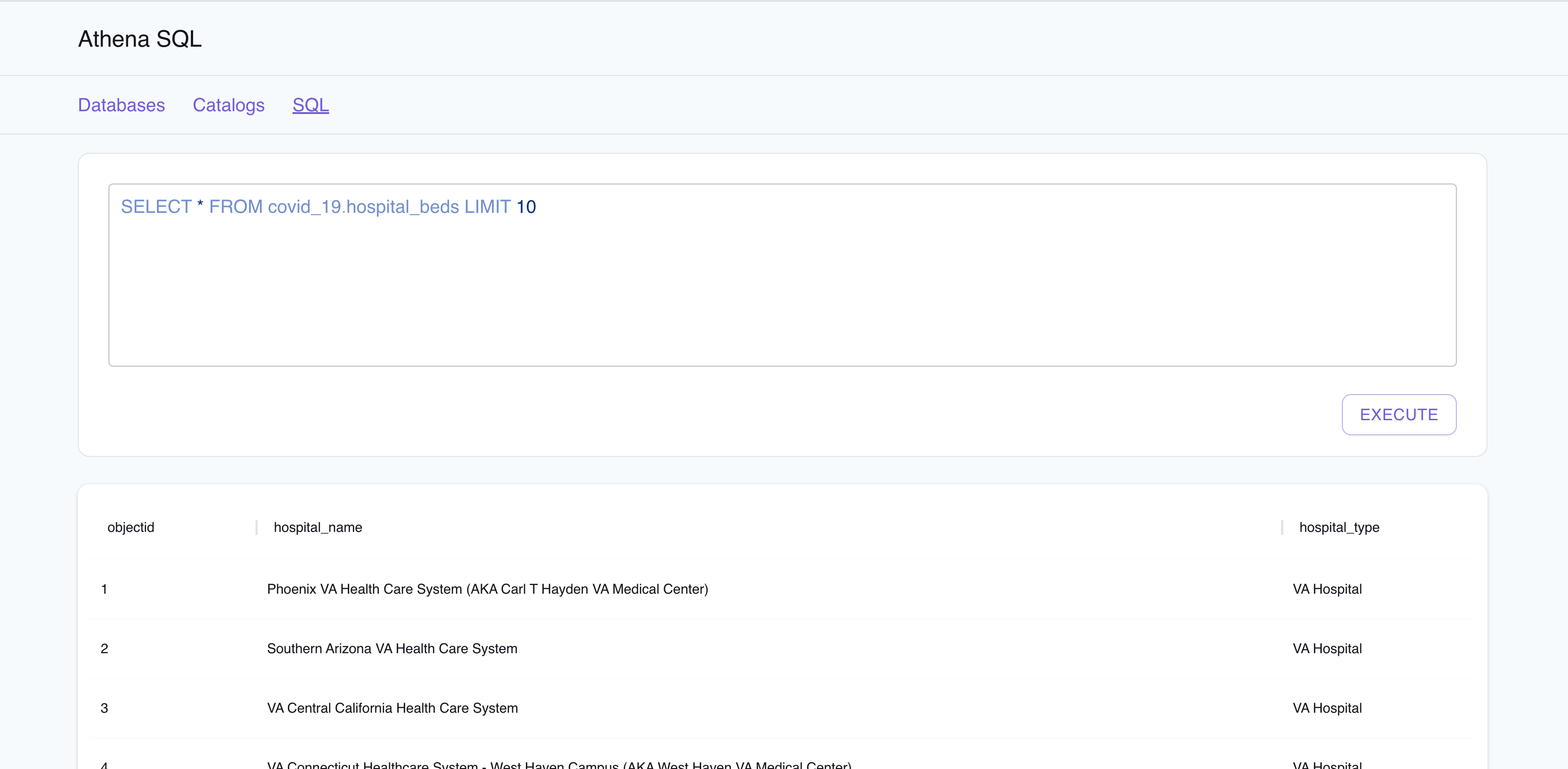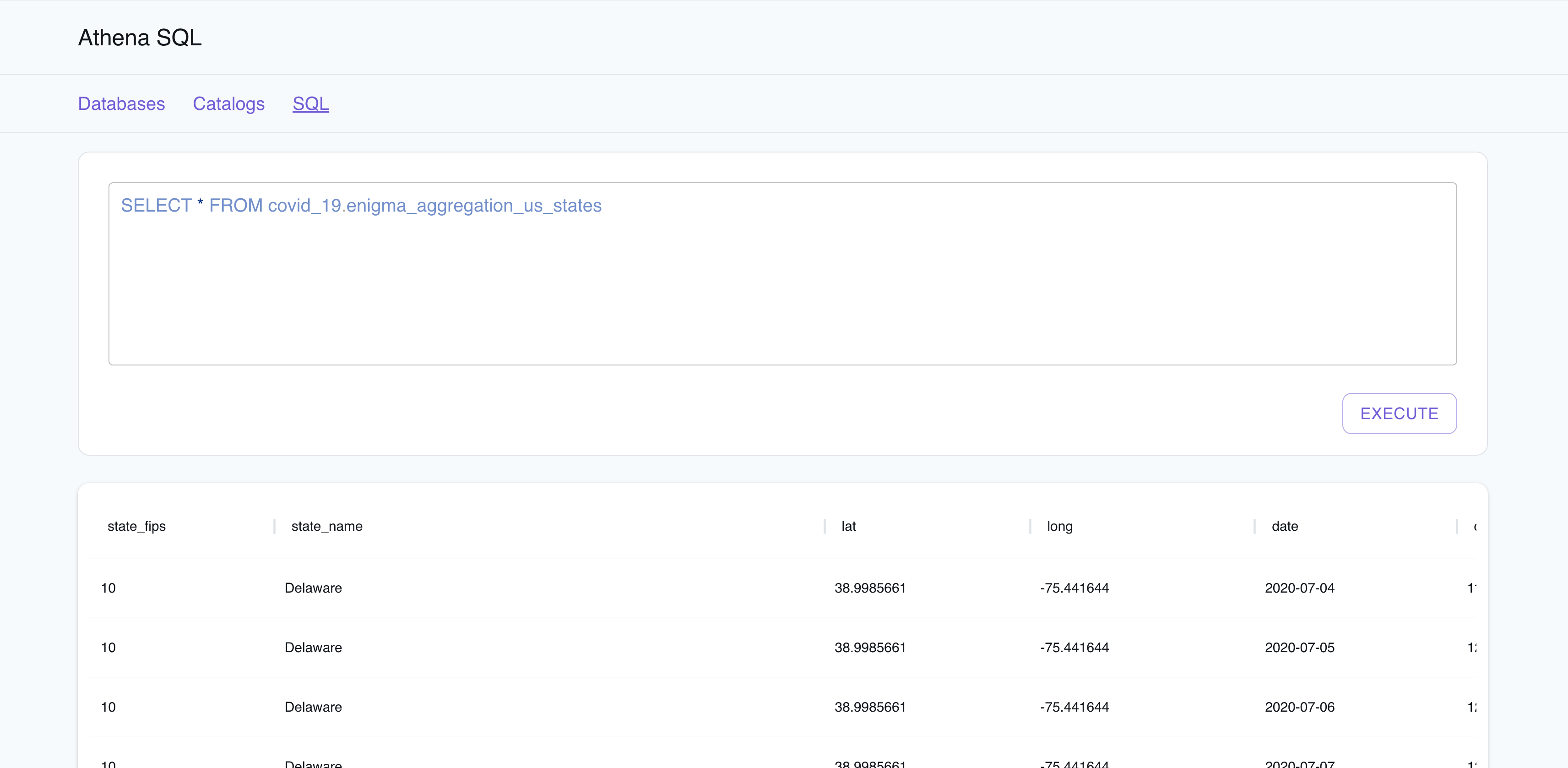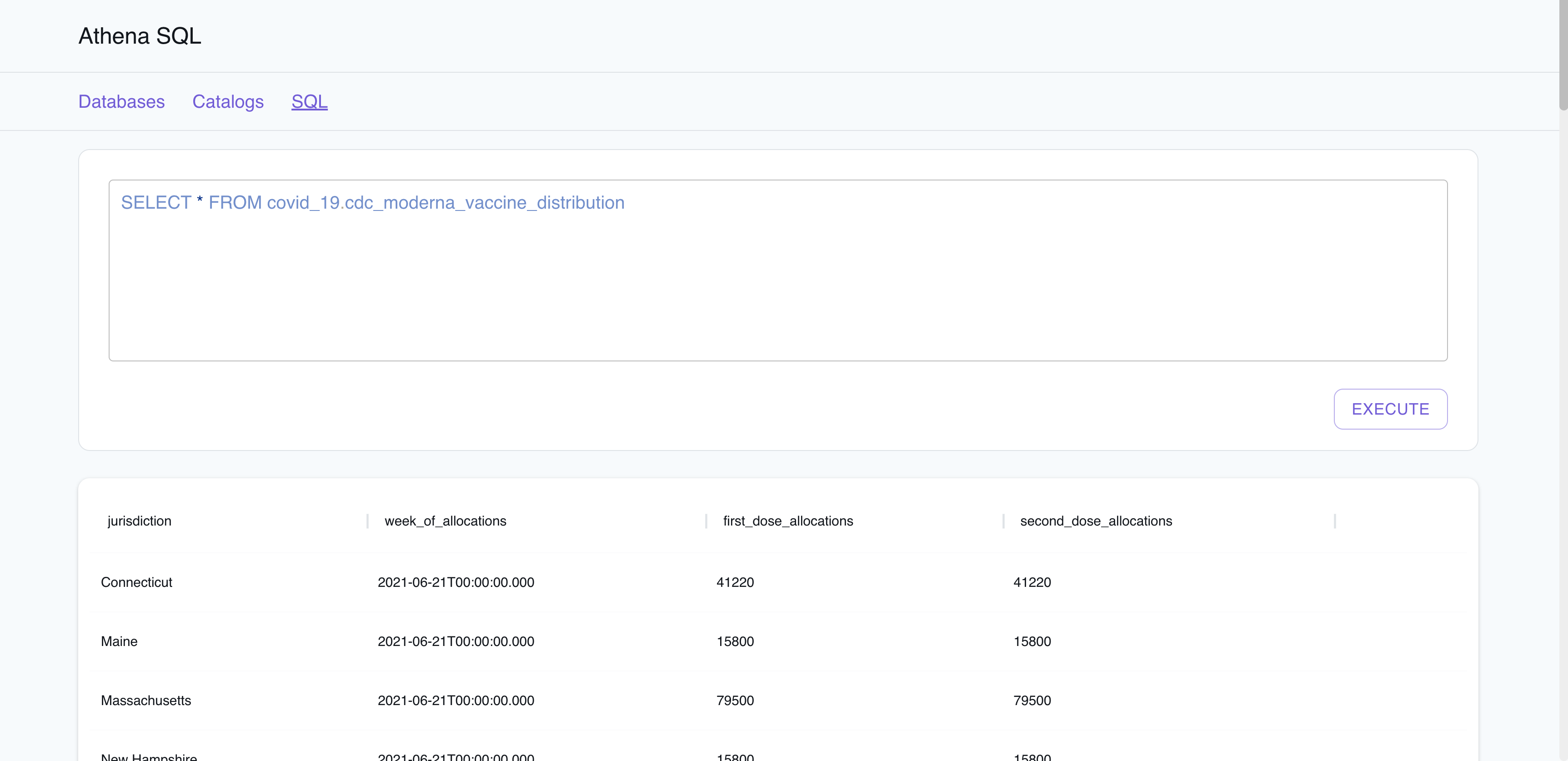| Key | Value |
|---|---|
| Environment |   |
| Services | Glue, Athena, S3, CloudFormation |
| Integrations | CloudFormation |
| Categories | Big Data |
| Level | Intermediate |
| GitHub | Repository link |
The Query data in S3 Bucket application sample demonstrates how you can leverage Amazon Athena to run standard SQL to analyze a large amount of data in Amazon S3 buckets. The application sample fetches COVID-19 data from the Registry of Open Data on AWS and allows you to run Athena SQL queries using the LocalStack Web Application to list the results from Athena Database/Tables. Users can deploy this application setup via Glue Catalog on AWS & LocalStack using CloudFormation with no changes. To test this application sample, we will demonstrate how you use LocalStack to deploy the infrastructure on your developer machine and your CI environment and run queries against the deployed resources on LocalStack's Athena Resource Browser.
The following diagram shows the architecture that this sample application builds and deploys:
We are using the following AWS services and their features to build our infrastructure:
- S3 to store the datasets and the results of the Athena SQL queries.
- Glue Data Catalog to set up the definitions for that data and create the database & tables.
- Athena as a serverless interactive query service to query the data in the AWS COVID-19 data lake.
- CloudFormation as an Infrastructure-as-Code (IaC) framework to create our stack, which includes the
covid-19database in our Data Catalog.
- LocalStack Pro with the
localstackCLI. - AWS CLI with the
awslocalwrapper.
We are using Athena & Glue Data Catalog in our sample application. These services are available in a BigData Mono container which installs dependencies directly into the LocalStack (localstack-main) container. While launching these services for the first time, the BigData Mono container will download the required dependencies (Hadoop, Hive, Presto, etc.) and install them into the LocalStack container. This process may take a few minutes.
To circumvent this, you can pull the localstack/localstack-pro:2.0.0-bigdata Mono container image with pre-installed default dependencies. You can launch the container with the LocalStack CLI or via Docker/Docker Compose.
Start LocalStack Pro with the LOCALSTACK_AUTH_TOKEN pre-configured:
export LOCALSTACK_AUTH_TOKEN=<your-auth-token>
localstack startIf you prefer running LocalStack in detached mode, you can add the
-dflag to thelocalstack startcommand, and use Docker Desktop to view the logs.
You can build and deploy the sample application on LocalStack by running our Makefile commands. Run make setup to create the infrastructure on LocalStack. Run make stop to delete the infrastructure by stopping LocalStack.
Alternatively, here are instructions to deploy it manually step-by-step.
We will create an S3 bucket to store the datasets. We will use the awslocal CLI to create the bucket.
awslocal s3 mb s3://covid19-lake
awslocal s3 cp CovidLakeStack.template.json s3://covid19-lake/cfn/CovidLakeStack.template.json
awslocal s3 sync ./covid19-lake-data/ s3://covid19-lake/We will create a Glue Data Catalog to set up the definitions for that data and create the database & tables. We will use the awslocal CLI to create the database and tables.
awslocal cloudformation create-stack --stack-name covid-lake-stack --template-url https://covid19-lake.s3.us-east-2.amazonaws.com/cfn/CovidLakeStack.template.jsonWait for a few seconds for the infrastructure to be created. You can check the status of the stack using the following command:
awslocal cloudformation describe-stacks --stack-name covid-lake-stack | grep StackStatusIf the StackStatus is CREATE_COMPLETE, you can proceed to the next step.
After the CloudFormation stack has been deployed in LocalStack, you can run queries against the data. To make testing more accessible, we have an Athena SQL viewer in the LocalStack Web Application. You can run queries against the covid-19 database in the Glue Data Catalog.
Run the query to fetch the hospital beds per US state:
SELECT * FROM covid_19.hospital_beds LIMIT 10You will see the results of the query in the Athena SQL viewer:
Run the query to get agreggated COVID test data and cases:
SELECT * FROM covid_19.enigma_aggregation_us_statesYou will see the results of the query in the Athena SQL viewer:
Run the query to get the list of Moderna vaccine allocations:
SELECT * FROM covid_19.cdc_moderna_vaccine_distributionYou will see the results of the query in the Athena SQL viewer:
You can write your own queries to explore the data in the COVID-19 data lake through LocalStack's Athena Resource Browser.
The sample application is based on a public AWS sample app that leverages Amazon Athena from .NET Core Application using AWS SDK for .NET to run standard SQL to analyze a large amount of data in Amazon S3. See this AWS blog post for more details: A public data lake for analysis of COVID-19 data.
We appreciate your interest in contributing to our project and are always looking for new ways to improve the developer experience. We welcome feedback, bug reports, and even feature ideas from the community. Please refer to the contributing file for more details on how to get started.



